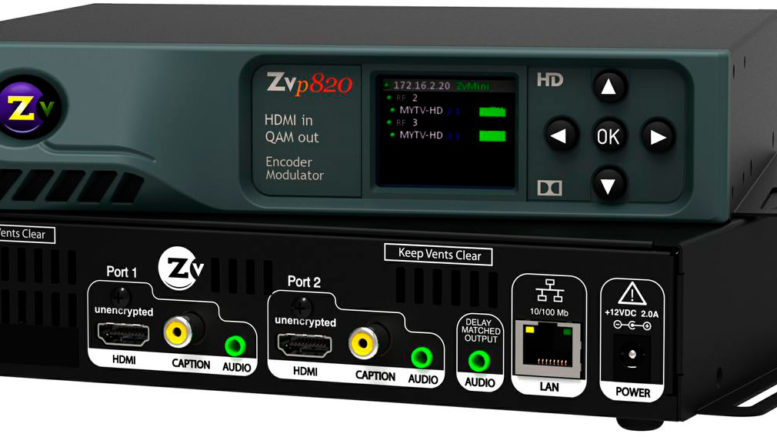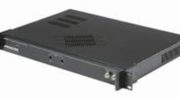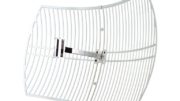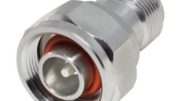If you have a hotel or large building, it’s the perfect time to upgrade the television system. I get it. Revenues are down. This makes you want to spend less, not more. But take this crisis and turn it into an opportunity. Now is the perfect time to do the kinds of upgrades that will pay off in the future.
Why you even need live TV in the first place
Live TV helps you and your guests stay connected. Of course everyone has a phone. But, sometimes that’s not enough. You can keep a large group entertained in a waiting area, or provide television to hotel rooms. It’s more than a courtesy, it’s what people expect. And while your guests can certainly stream what they’re looking for, you could find that your Wi-Fi gets easily overloaded by so many requests. And if you don’t offer Wi-Fi, you’ll find your guests complaining about the cell service unless you put in a cell booster system.
Live TV is a proven performer, and it’s a great, easy, inexpensive way to keep people happy while they’re visiting you.
Why you might want to upgrade your live TV system
When I travel, I’m always amazed by how many places are making do with some very old technologies. I’m talking about grainy, dark standard definition signals. The televisions are almost always able to handle HD, but the distribution system isn’t.
You might be surprised by the number of standard-definition systems out there. Until very recently, cable and satellite companies were still activating new standard definition systems. Standard definition systems were less expensive than high-definition ones as well.
But, the world moves on, and new technologies come in. Television today means high definition. It’s not only the expectation from viewers, but it’s also pretty much the only kind of tech you can get today.
If your television system is more than five years old, and especially if it’s still a standard-definition system, it’s time to upgrade
Coaxial vs. Ethernet
Since the beginning, television has been distributed over coaxial cables. It’s reliable, it works, and technicians know how to work with it. However, in the last decade or so we’ve started to see IPTV (internet protocol television) systems getting installed. IPTV systems use special televisions or converter boxes to simulate a regular TV experience for people. The people who use these systems don’t even notice that they’re using something other than a traditional TV system.
Traditional coaxial cable is reliable and easy to work with. Installers are comfortable with it and all the tools you need to maintain it. Because it’s been used so consistently over the last several decades, it’s usually cheaper to stay with coaxial cable when upgrading.
However, coaxial cable is fairly expensive. It contains a lot of copper which is a very expensive metal. It also has a distance limitation: in general it’s rare that you’ll be able to run more than 200-250 feet without adding amplifiers.
Ethernet cabling
Ethernet cabling is also several decades old at this point. Businesses started using it in the 1990s, and it was based on the telephone wiring that had been in use for at least fifty years before that.
However, it’s only been used for television for a little more than a decade. Although you can run television over Ethernet cable, most of the time you can’t run it through the same wires as your regular internet traffic. You need dedicated wires. That can make cable tracing difficult unless you use a different color cable consistently.
Ethernet cables can go 100 meters (328 feet) on a single run. After that you need to run into a network switch before you send it over another run. That’s a longer distance than copper, but not much longer.
The real advantage of Ethernet cables is the cost of the cable itself. In general that sort of cable is a lot less expensive. Even though it’s a more complex cable, it’s less expensive because of the much smaller amount of copper in it. Ethernet cabling, which is more properly called category cabling, has eight very thin wires instead of one thick one.
Because Ethernet is thinner, it can fit through smaller spaces and you can pack more cables into a conduit. That can make installation easier as well.
Choosing the right headend
In most cases, you’ll have to decide on whether to use an IPTV headend (Ethernet) or a traditional headend (coax.) It’s either hard or downright impossible to change an existing headend system from one wiring system to the other once it’s in.
IPTV headends are usually more expensive, because there are fewer companies making them. They always need special televisions or converter boxes. That doesn’t make them a bad choice, but it’s something you have to plan for.
Often times the decision comes down to who you will have on site. Headends themselves rarely need maintenance and generally when there’s a problem it comes from the wires. If you have a maintenance person who’s comfortable with coaxial cable, choose a traditional headend. If the person on site is really more comfortable with Ethernet wiring, it might make sense to have an IPTV headend.
No matter which system you’re looking for, you can get the best advice and the best service by calling the experts. Our Signal Connect division can give you the best advice and prepare a complete quote for you. It starts with a call to 888-233-7563. If it’s after East Coast business hours, fill out the form below and we’ll get back to you!





